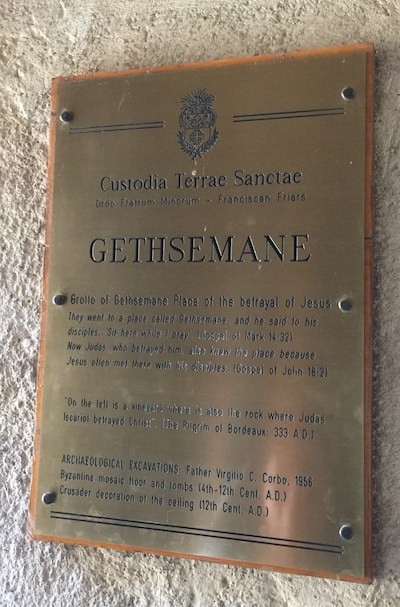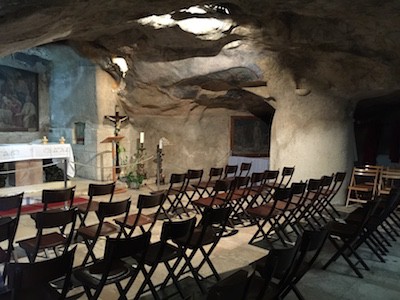In the first scene of my novel Transgression, my heroine Rivka finds herself at the back of a mysterious cave in Jerusalem. She doesn’t know it yet, but she’s traveled back in time through a wormhole to the year AD 57.
When she comes out of the cave, she looks up and sees the Temple Mount rising in front of her. But it’s not the Temple Mount she remembers from the tour she took in Jerusalem on a hot summer day in the twenty-first century.
The Temple Mount she’s looking at is clean. Spotless. New.
And she begins to realize that something very weird has happened.
Rivka goes on to have an adventure in first-century Jerusalem. She meets some new friends and makes some dangerous enemies. She finds some surprises that challenge what she thought she knew. And, oh yeah, she saves the life of the apostle Paul.
Late in the novel, she ventures back to the cave where it all began, because that’s her ticket back to the 21st century. And something happens there that changes everything for her and her new friend Ari. (If you’ve read Transgression, you know what I’m talking about.)
The Cave is Real
By the way, the cave is real. I’ve never mentioned this fact publicly before, but the cave in the novel is real.
You can visit the cave today. I went there myself in the summer of 2016.
But I already knew the cave existed way back in the summer of 1997, when I wrote that first scene of Transgression.
How did I know the cave existed?
Because I read about it in the July/August 1995 issue of Biblical Archaeology Review. Prof. Joan Taylor wrote an article about the cave that captured my imagination.
What’s special about this cave?
The cave may very well be the exact spot where Jesus was arrested on the night he was betrayed.
Why This Cave Might Be Where Jesus Was Arrested
The cave is at the base of the Mount of Olives, right next to the traditional Tomb of the Virgin, and less than a hundred yards from the traditional “Garden of Gethsemane.”
As Prof. Taylor points out in her article, the cave would be a perfect spot for Jesus and the Twelve to camp out during the Passover season. You could build a small fire inside and keep the whole place reasonably warm. You’d be protected from the elements. You’d be safe from the prying eyes of the authorities—unless one of your friends turned traitor on you.
And there’s a notch in the wall that used to hold the end of the beam of an olive press. That’s important, because the word “Gethsemane” is just a transliteration of the Aramaic word “Gat-Shemanin,” which means “oil-press.” The cave is right next to a grove of ancient olive trees. In the first century, the owner of the olive grove pressed his olives into oil in that cave. The olive harvest comes in the fall. In the spring, (at Passover time), the owner wasn’t using his cave. He may well have rented it out to visitors for the feast of Passover.
The cave is about 60 feet long and 36 feet wide and could easily have held a few dozen people.
The reason you can visit the cave today is because there’s a long tradition (going back to at least the fourth century) that this was the site of the arrest of Jesus. So they built a small chapel in the cave, and it’s been there ever since.
What The Gethsemane Cave Looks Like Today
If you visit the cave, you’ll see a small plaque at the entrance that says this might be the place where Jesus was arrested. Here’s a picture of the plaque:

The place is an actual chapel, so they hold religious services there to this day. When my wife and I visited in the summer of 2016, we sat down in the chapel, took out our phones, opened our electronic Bibles, and read the accounts of the arrest of Jesus in Mark, Matthew, Luke, and John.
If you ever visit Jerusalem, I recommend that you do that too. You’ll get an amazing sense of the reality of the story. Because that reality will be all around you.
Here’s a photo of the cave that I took:

As you can see, the cave today is an odd mix of ancient and modern. That’s typical in Jerusalem. I’ve been to a restaurant in the Old City where part of the wall was originally a stone in the city wall in the first century. I’ve been to another restaurant and sat at a table right next to a small monument to the Tenth Legion (the one that destroyed the city in AD 70). Wherever you go in Jerusalem, you’ll find the very old sitting cheek-by-jowl with the very new.
More On The Gethsemane Cave In My Next Novel
I’m working on a new series of novels about Jesus of Nazareth right now, with the working series title Crown of Thorns. You can bet the cave will show up in these books. Because I’m pretty sure Jesus knew the owner of this cave and spent time here when he needed a quiet place.
So when you read Crown of Thorns (the first book in the series will be coming out next year), watch for the cave!
Some interesting things will happen there.

[…] This area has a number of olive trees, and there’s a cave nearby that shows signs of having had an olive press. For more on that, see my blog post, The Gethsemane Cave. […]
[…] All four gospels say that Jesus was arrested on the night before his death in the area now called “Gethsemane”. This word is an English rendition of “Gat-shemen,” meaning “olive oil press.” There’s a cave in the Kidron Valley at the base of the Mount of Olives that bears archaeological evidence of an olive press. Long local tradition holds that this cave is the exact location where Jesus was arrested. You can visit the cave to this day. There’s a very nice chapel there. I blogged about it in my article The Gethsemane Cave. […]